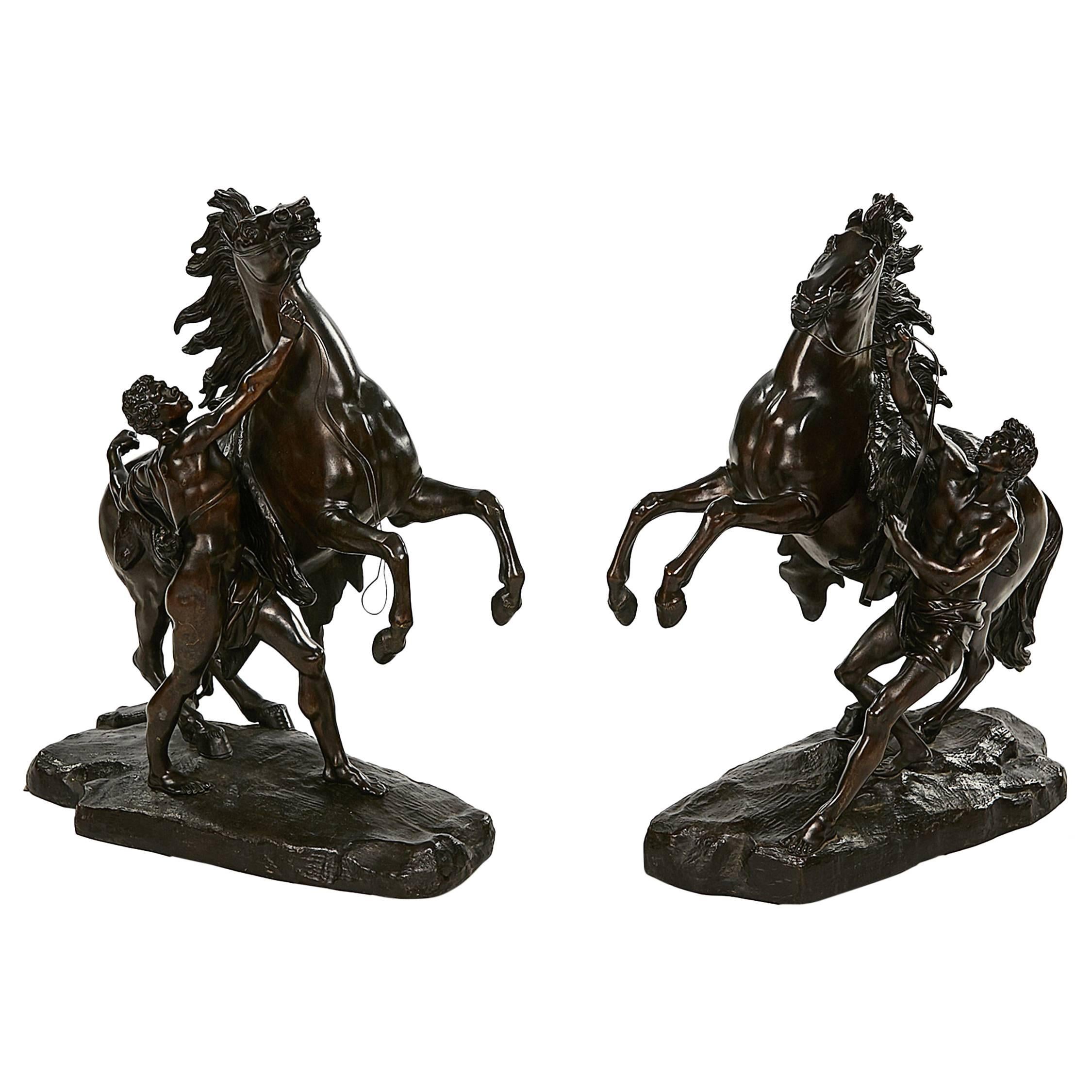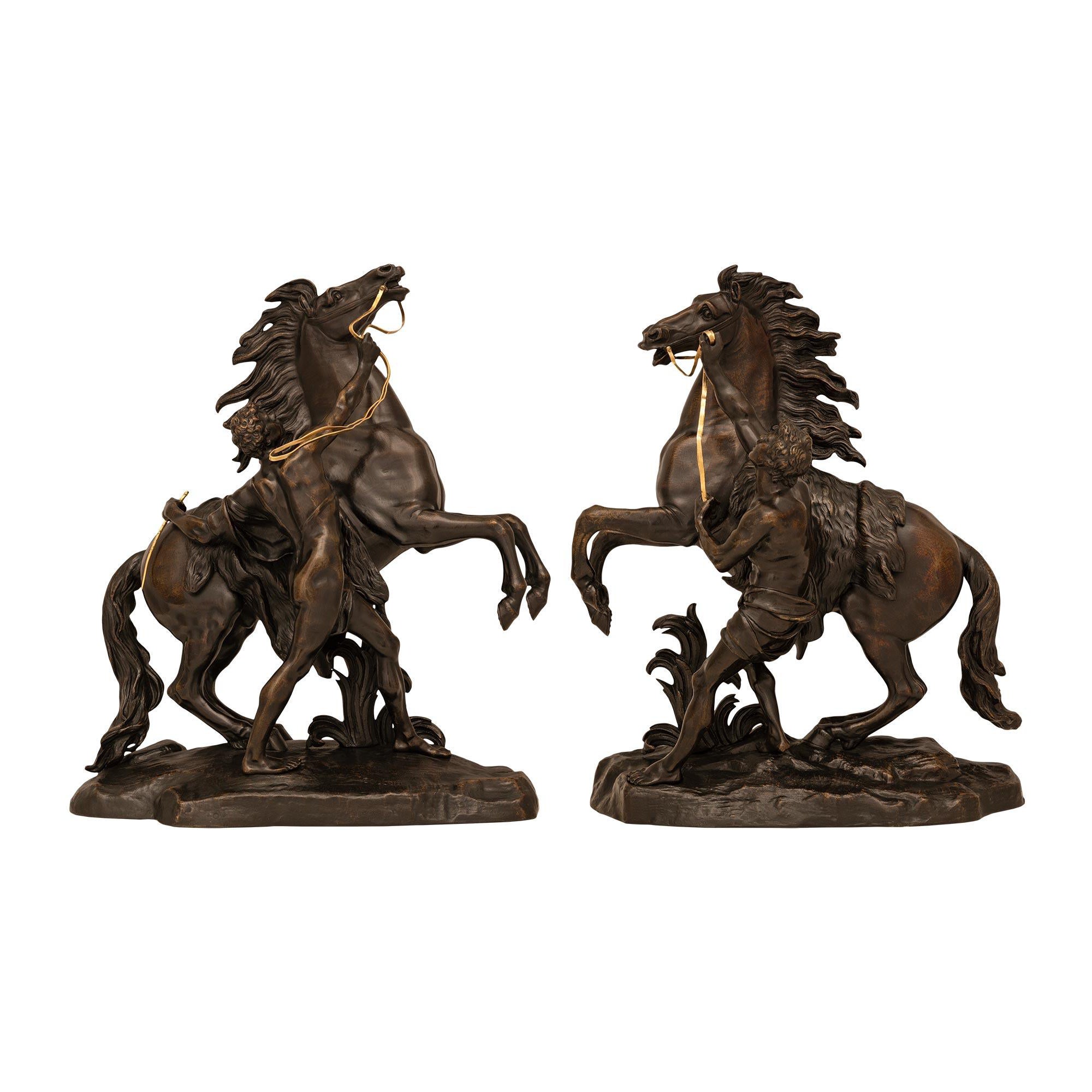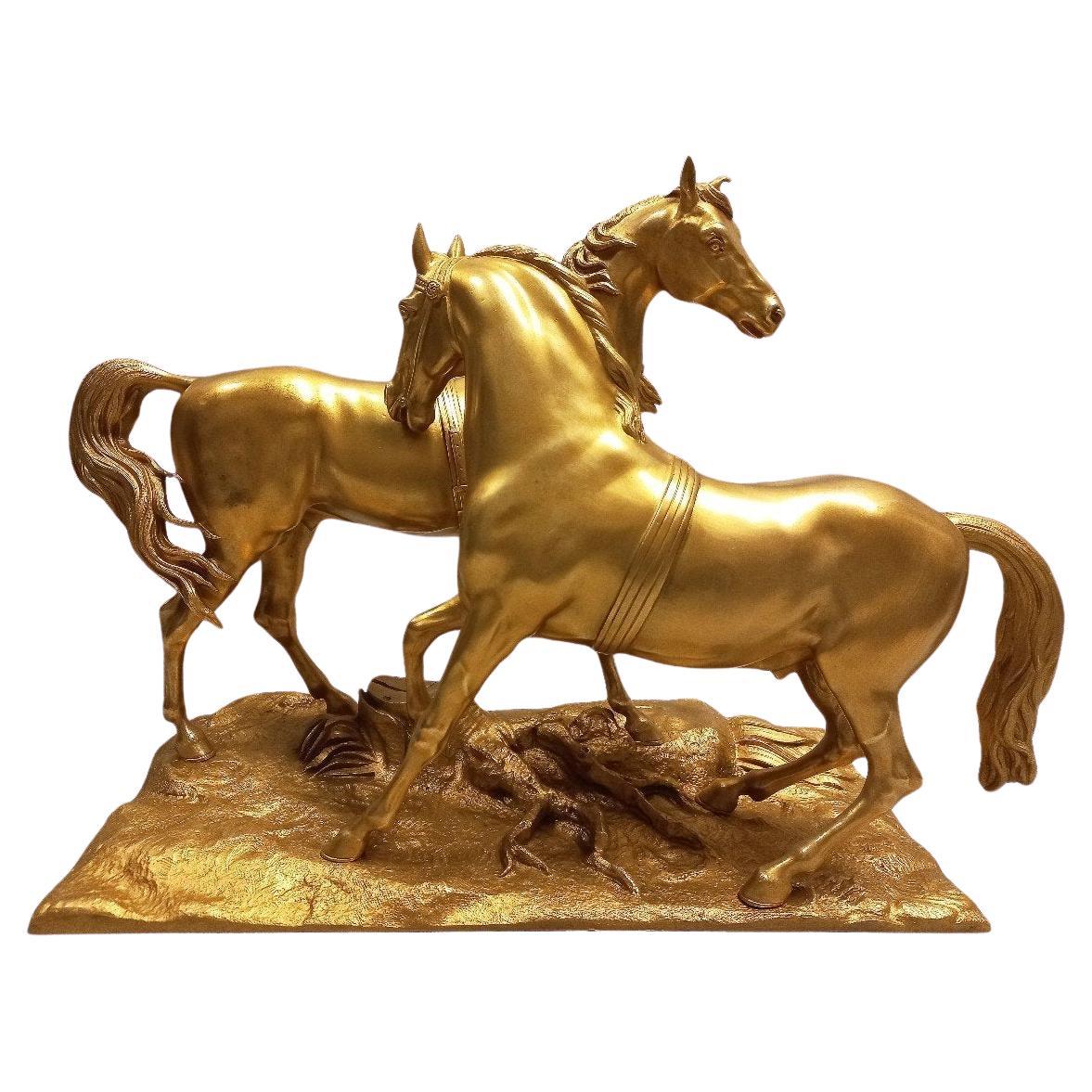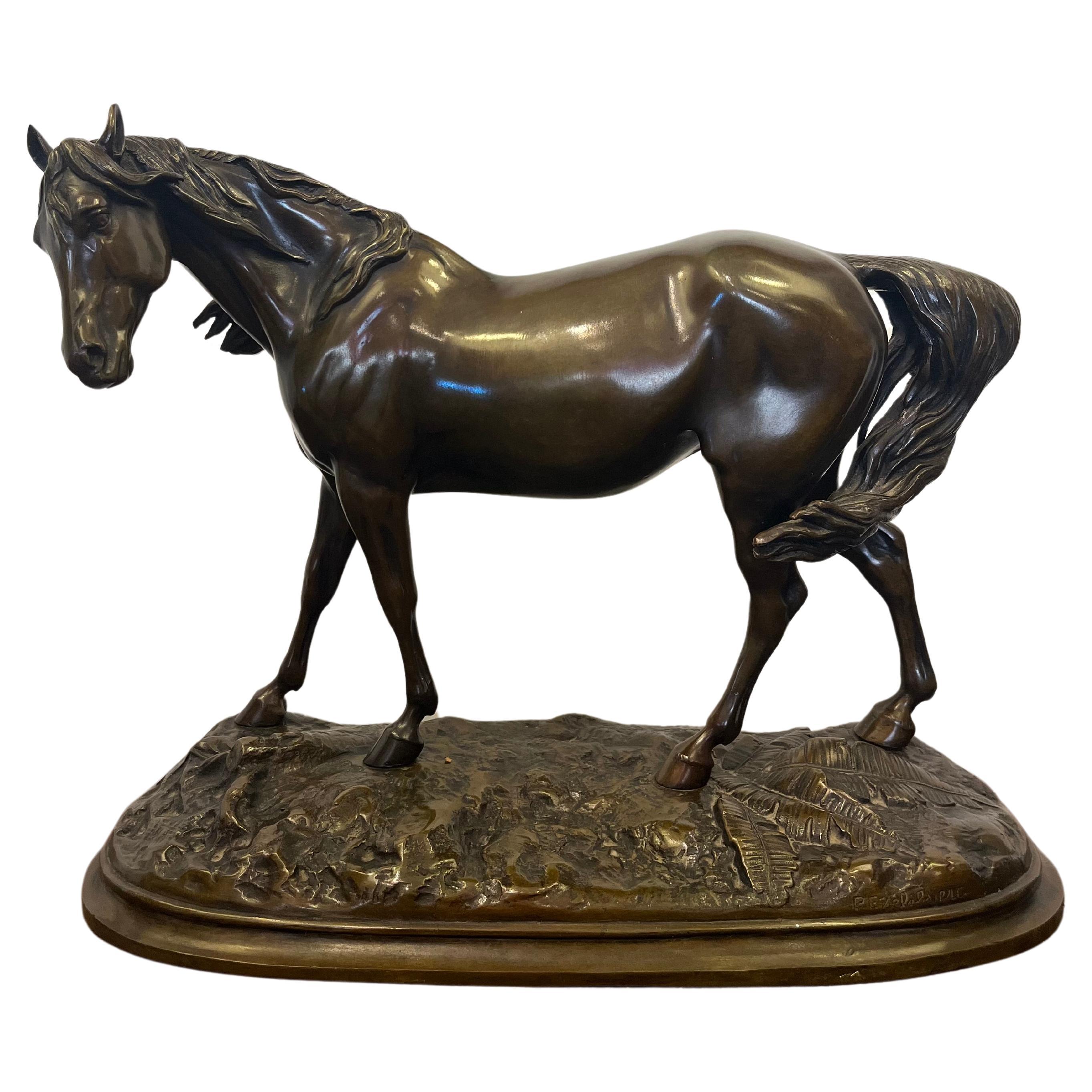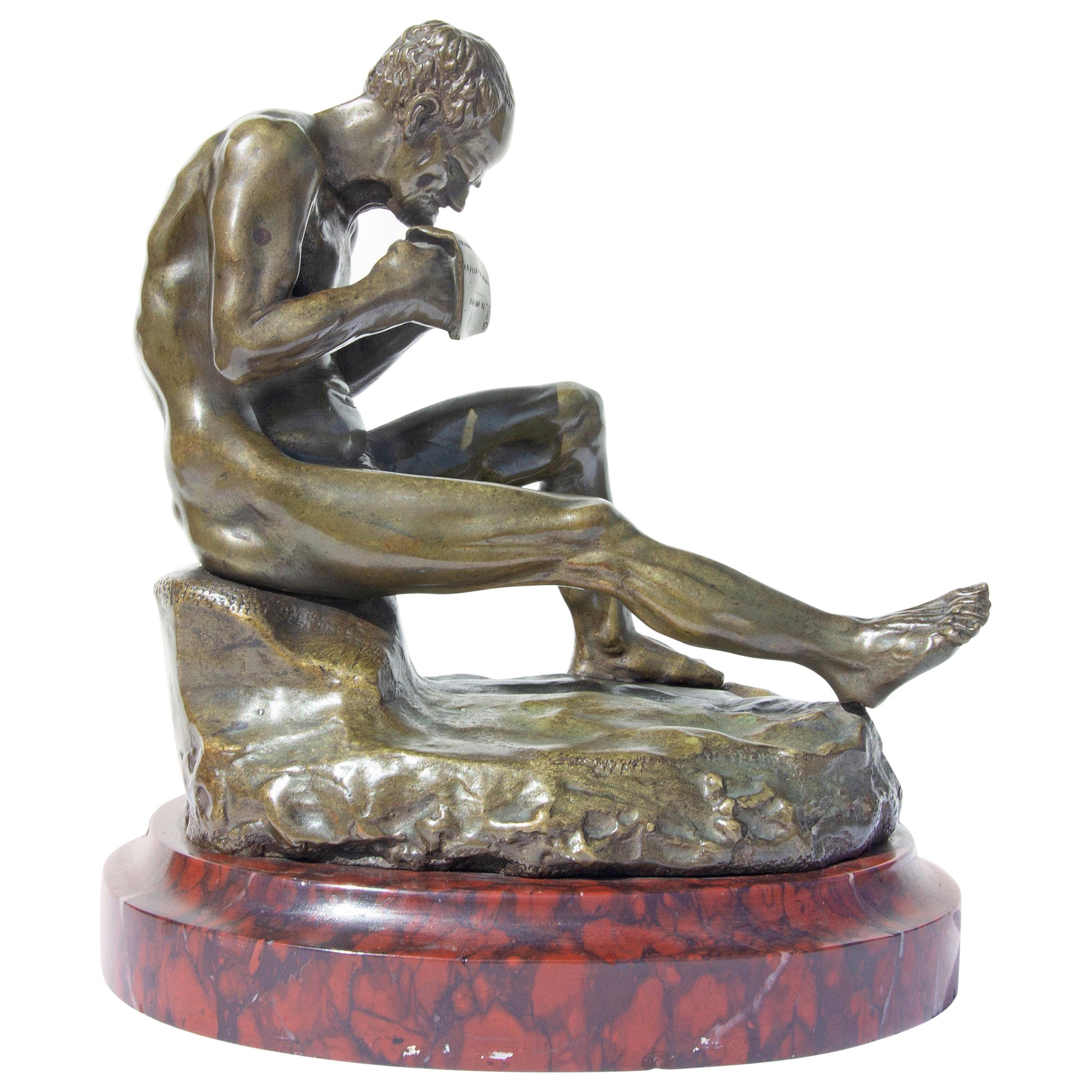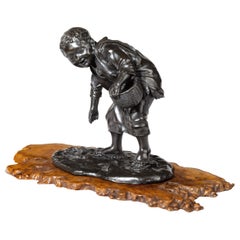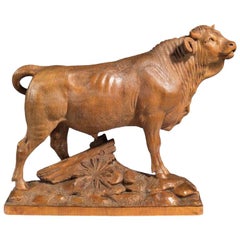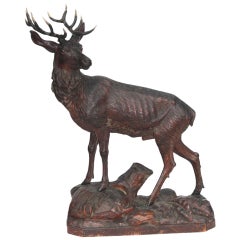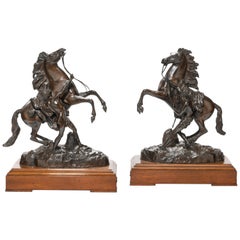
19th Century Bronze Sculptures of the Marly Horses
View Similar Items
Want more images or videos?
Request additional images or videos from the seller
1 of 12
19th Century Bronze Sculptures of the Marly Horses
About the Item
- Dimensions:Height: 19.5 in (49.53 cm)Width: 14.5 in (36.83 cm)Depth: 8 in (20.32 cm)
- Materials and Techniques:
- Place of Origin:
- Period:1900-1909
- Date of Manufacture:circa 1900
- Condition:Wear consistent with age and use.
- Seller Location:Lymington, GB
- Reference Number:1stDibs: LU973013127911
About the Seller
5.0
Recognized Seller
These prestigious sellers are industry leaders and represent the highest echelon for item quality and design.
Established in 1982
1stDibs seller since 2013
109 sales on 1stDibs
Associations
LAPADA - The Association of Arts & Antiques Dealers
More From This SellerView All
- 19th Century Meiji Period Bronze of a Boy Collecting Sweet Chestnuts by SeiyaLocated in Lymington, HampshireA charming Meiji period bronze of a boy collecting sweet chestnuts by Seiya, he carries a basket and is looking down at an insect crawling over his hand, he is also evidently wearing...Category
Antique 1880s Japanese Meiji Figurative Sculptures
MaterialsBronze
- 19th Century Black Forest BullLocated in Lymington, HampshireFine quality late 19th century Black forest bull. The carver has caught the power and strength of this majestic animal, circa 1870 For similar examp...Category
Antique 1870s Swiss Black Forest Animal Sculptures
MaterialsWood
- Fine Late 19th Century Black Forest StagLocated in Lymington, HampshireA fine late 19th century Black Forest stag. The carving of this fine piece is particularly good.Category
Antique Early 19th Century German Animal Sculptures
MaterialsWood
- Meiji Period Bronze Sculpture of a Mother and Son by AtsuyoshiLocated in Lymington, HampshireA Meiji period bronze sculpture of a mother and son by Atsuyoshi, she is shown seated on a gnarled rootwood base, with her arm round a crying boy standing by her knee and offering her breast, wearing a short robe, trousers and a cloth incised with Mount Fuji around her head, and bare feet. Signed Atsuyoshi saku, Maruki Shachu seisaku (??????????? (??????????). Japanese, circa 1880. Footnote: Atsuyoshi is known for a number of finely modelled bronze studies of both wild and domesticated animals, almost all of them made for the Tokyo based Maruki Company. This is therefore an unusual subject matter for him and Japanese bronzes in general , however Oliver Impey and Joyce Seaman, in ‘Japanese Decorative Arts of the Meiji Period’ (in the Ashmolean Museum Collections), pp. 68-69, include a bronze group of a woman who has just finished breast feeding...Category
Antique 1880s Japanese Meiji Metalwork
MaterialsBronze
- Bronze Sculpture by Luis Domenech VicenteBy Luis Domenech y Vicente 1Located in Lymington, HampshireA Fine Bronze Sculpture by Luis Domenech y Vicente, c.1904 After the Model He Exhibited at the Salon Des Beaux Arts in Paris That Year Luis Domenech y Vicente, Le Messager de Paix, ...Category
Antique 1890s Spanish Figurative Sculptures
MaterialsBronze
- Pair of 19th Century Bronze, Ormolu and Fluorspar CandelabraLocated in Lymington, HampshireA pair of 19th century bronze, ormolu and fluorspar candelabra.Category
Antique 19th Century English Candle Holders
MaterialsBronze, Ormolu
You May Also Like
- Pair French 19th/20th Century Gilt-Bronze Sculptures of The Marly Horses LampsBy Guillaume CoustouLocated in Los Angeles, CAA Fine Pair of French 19th/20th Century Gilt-Bronze Sculptures of "The Marly Horses" (Now turned into lamps) After the original by Guillaume Coustou (French, 1677-1746). The large pair of equestrian bronze sculptures, finished in a gold patina, each depicting rearing horses with their groom, both raised on oval a black slate and Bardiglio marble bases and fitted with modern electrical twin-light brass fittings and cream colored shades. The base on an ebonized wooden platform. Circa: Paris, 1900-1920. Sculpture & Base Height: 31 1/4 inches (79.8 cm) Base Width: 21 3/4 inches (55.3 cm) Base Depth: 12 3/4 inches (32.4 cm) Height to top of (Adjustable) shade fitting: 48 1/4 inches (122.6 cm) Shade Height: 15 inches (38.1 cm) Shade Width: 26 inches (66.1 cm) Shade Depth: 20 inches (50.8 cm) The original Marly Horses are two 1743–1745 Carrara marble sculpted groups by Guillaume Coustou. They were commissioned by Louis XV of France for the trough at the entrance to the grounds of his château de Marly. Coustou's last works, they were intended to replace two other sculpted groups, Mercury on Pegasus and Pegasus, Renown of Horses, both by Antoine Coysevox, which had been removed to the Tuileries Gardens in 1719. Louis XV chose the modellos in 1743 and the full-size sculptures were completed in only two years, being installed at Marly in 1745. They proved highly successful in reproduction, particularly on a smaller scale, and prefigured Théodore Géricault and other Romantic artists' obsession with equestrian subjects. The Marly horses were later also used as the central motif of the monochrome 819-line RTF/ORTF test card which was used on TF1 from 1953 until 1983. The originals were moved to the place de la Concorde in Paris in 1794 and Louis-Denis Caillouette (1790–1868) restored them in 1840. In 1984 it was concluded that the annual military parades on 14 July were damaging the sculptures and they were replaced by marble copies produced by Michel Bourbon in the studio of a subsidiary of Bouygues. The latter also gained the right to an extra copy, which was placed in Bouygues's social building. The original sculptures were moved to a former courtyard in the Richelieu wing of the Louvre Museum, which was renamed the 'cour Marly' in their honour, whilst Bourbon's two main copies were moved to the originals' first site near the trough at Marly, with work overseen by the architect Serge Macel. Guillaume Coustou the Elder (29 November 1677, Lyon – 22 February 1746, Paris) was a French sculptor of the Baroque and Louis XIV style. He was a royal sculptor for Louis XIV and Louis XV and became Director of the Royal Academy of Painting and Sculpture in 1735. He is best known for his monumental statues of horses made for the Chateau of Marly, whose replicas now stand in the Place de la Concorde in Paris. Coustou was a member of a family of famous sculptors; his uncle, Antoine Coysevox, was a royal sculptor; his elder brother, Nicolas Coustou was a sculptor, and his son Guillaume Coustou the Younger also become a noted royal sculptor. Like his older brother, he won the (Prix de Rome) of the Royal Academy which entitled him to study for four years at the French Academy in Rome. However, he refused to accept the discipline of the academy, gave up his studies, set out to make his own career as an artist. He worked for a time in the atelier of the painter Pierre Legros, and eventually returned to Paris. Upon his return to Paris, he assisted his uncle Coysevox in making two monumental equestrian sculptures, Fame and Mercury, for the Château de Marly, the new residence of Louis XIV near the Palace of Versailles, where he went to escape the crowds and ceremony of the Palace. He later (1740–1745), made his own horses, The Horses of Marly, his most famous works, to replace them. The horses reinvent the theme of the colossal Roman marbles of the Horse Tamers in the Piazza Quirinale, Rome. They were commissioned by Louis XV in 1739 and installed in 1745 at the Abreuvoir ("Horse Trough") at Marly. The horses were considered masterpieces of the grace and expressiveness of the French Late Baroque or Rococo style. After the Revolution they were moved from Marly to the beginning of the Champs-Élysées on the Place de la Concorde. The originals were brought indoors for protection at the Louvre Museum in 1984. In 1704 Coustou was received into the Académie royale de peinture et de sculpture. The work he made to mark his entrance was Hercules on the Pyre, now in the Louvre. It displays the special hallmark of the Baroque, a twisting and rising transverse pose, as well as highly skillful carving. He rose to become Director of the academy in 1733. Another of his major works from his later career, the statue of Maria Leszczynska, (1731)is on display at the Louvre. Coustou also created two colossal monuments, The Ocean and the Mediterranean among other sculptures for the park at Marly; the bronze Rhone, which formed part of the statue of Louis XIV at Lyons, and the sculptures at the entrance of the Hôtel des Invalides. Of these latter, the bas-relief representing Louis XIV mounted and accompanied by Justice and Prudence was destroyed during the Revolution, but was restored in 1815 by Pierre Cartellier from Coustou's model; the bronze figures of Mars and Minerva (1733–34), on either side of the doorway, were not interfered with. In 1714 for Marly he collaborated in two marble sculptures representing Apollo Chasing Daphne (both at the Louvre), in which Nicolas Coustou sculpted the Apollo and Guillaume the Daphne. About the same time he was commissioned to produce another running figure in marble, a Hippomenes designed to complement an Atalanta copied from the Antique by Pierre Lepautre...Category
Antique Early 1900s French Louis XV Animal Sculptures
MaterialsMarble, Bronze
- Pair of 19th Century French Patinated Bronze Models of the Marly HorsesBy Guillaume CoustouLocated in New York, NYPair of 19th century French patinated bronze models of the Marly Horses.Category
Antique 1870s French Napoleon III Figurative Sculptures
MaterialsBronze
- Pair 19th Century French Bronze Marly Horse Sculptures After CoustouBy Guillaume CoustouLocated in New York, NYPair of 19th century French bronze marly horse statues after the original models by Guillaume Coustou (1677-1746).Category
Antique Late 19th Century French Neoclassical Figurative Sculptures
MaterialsMarble, Bronze
- Antique Pair of French Bronze Marly Horses Sculptures by Cousteau 19th CenturyLocated in London, GBThis is a fine antique pair of French Grand Tour patinated-bronze sculptures of the Marly Horses, Circa 1850 in date and signed to one base. The original Marly Horses were commissi...Category
Antique 1850s French Grand Tour Figurative Sculptures
MaterialsBronze
- Antique Pair of French Grand Tour Bronze Marly Horses Sculptures 19th CenturyLocated in London, GBThis is a beautiful antique Grand Tour pair of French patinated-bronze sculptures of Marly Horses, Circa 1880 in date. The Marly Horses were commissioned by Louis XV of France scul...Category
Antique 1880s Figurative Sculptures
MaterialsBronze
- Large Pair of 19th Century Bronze Marly Horses, after CoustouBy CoustouLocated in Brighton, SussexA very impressive pair of 19th century bronze Marly horse, having a good patina, after Guillaume Coustou the elder 1677-1746.Category
Antique 19th Century French Animal Sculptures
MaterialsBronze


